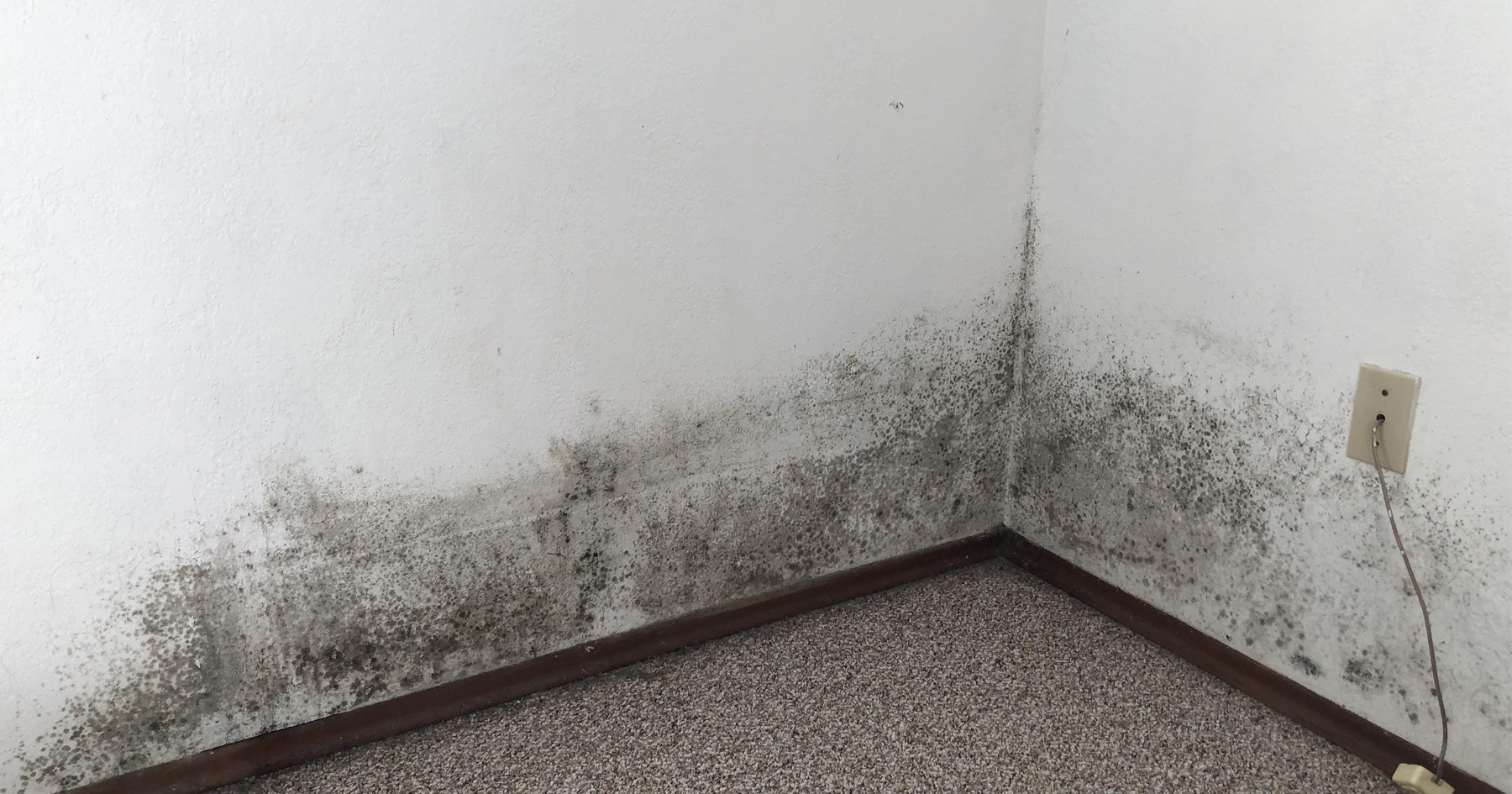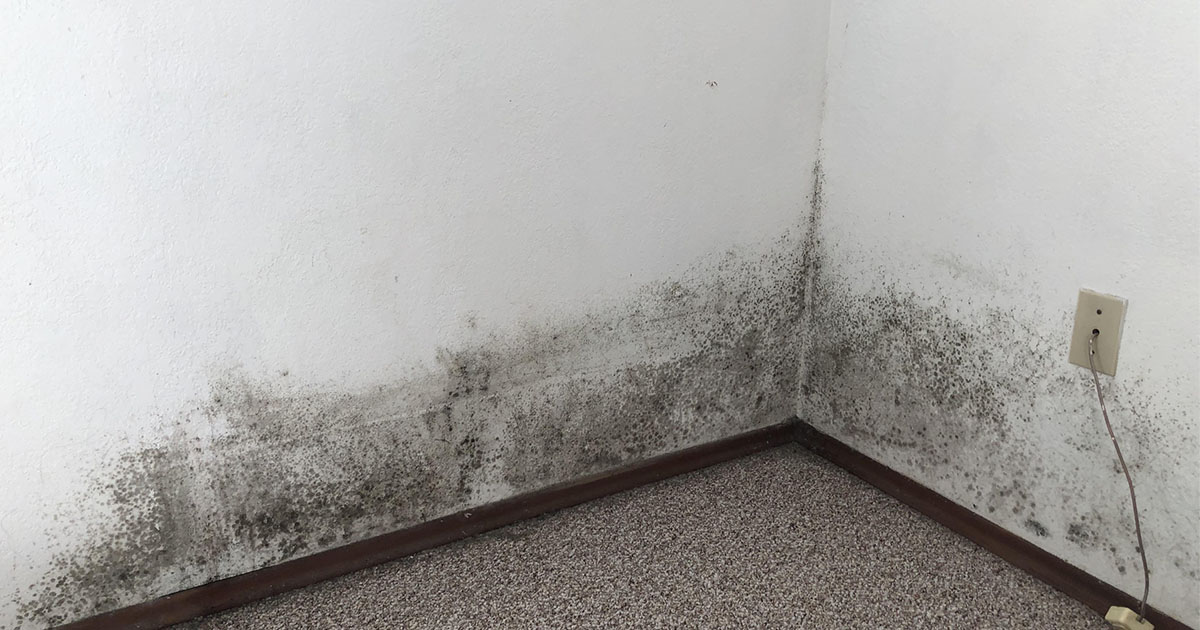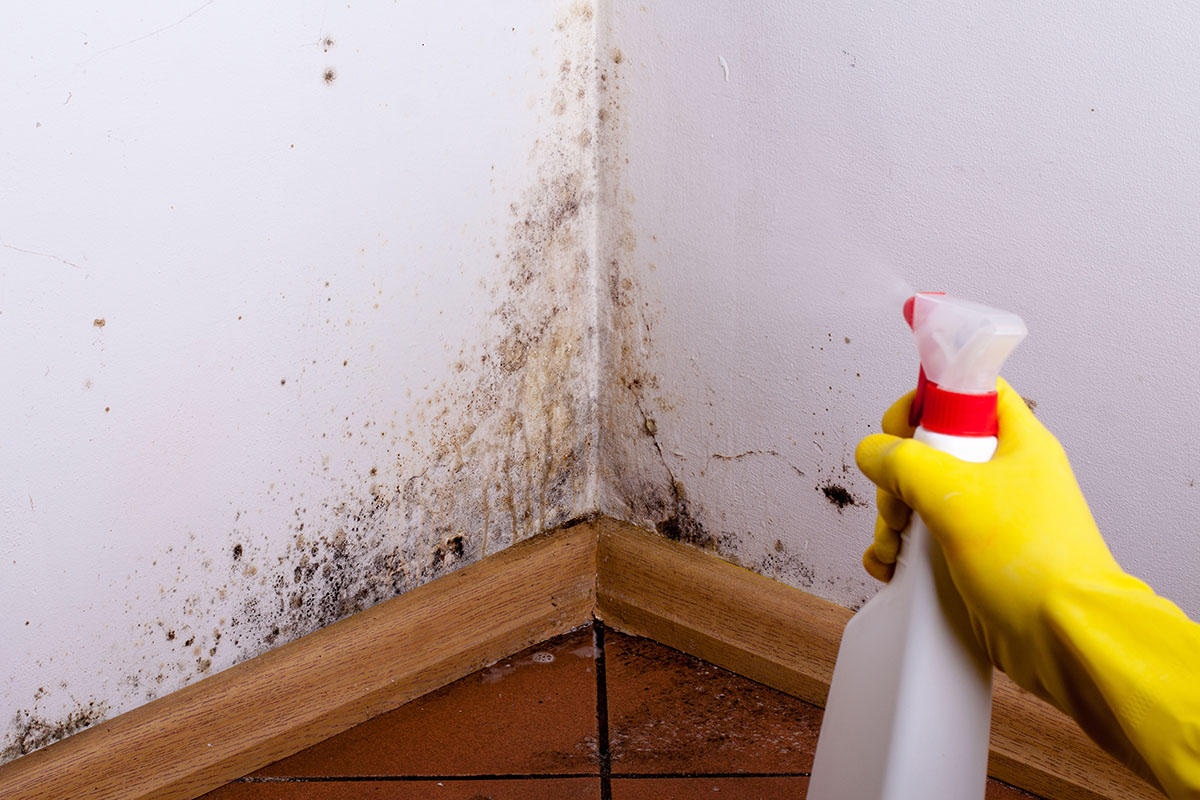As a home improvement expert who has tackled mold remediation many times, I’m often asked how to remove mold from drywall safely. Mold may look like a minor nuisance, but it can lead to respiratory infections, allergic reactions and continued structural damage in your home. So it’s crucial to act fast when you spot those fuzzy black spots.
In this comprehensive guide, I’ll share the proven techniques I’ve learned for mold removal on drywall and preventing regrowth.
Whether you have surface mold from high humidity or leaks causing soaked walls, my step-by-step instructions will help you conquer the mold monster and refresh your home. Let’s get started!
- Mold can cause serious health issues, so it’s important to remove it as soon as it’s spotted.
- Fix any moisture sources like leaks that allow mold to grow before starting removal.
- Protect yourself with gloves, masks, goggles when removing mold.
- Clean surface mold with vacuuming, brushing and cleaning solutions.
- For deeper mold, cut out and replace drywall sections.
- Dry areas quickly and prevent future growth with fans, dehumidifiers and mold-resistant paint.
Assess the Mold Damage
Before grabbing the bleach, take time to assess the extent of the mold problem. This will determine the removal approach.
1. Inspect and Evaluate the Moldy Areas
Thoroughly inspecting the mold damage on your drywall will guide your removal approach.
Follow these tips:
- Note the location of the mold. Is it concentrated in one area like near a pipe or window? Or spread out in patches? Location points to the moisture source.
- Estimate the size of the affected area. A few square feet may just need surface cleaning, while over 10 square feet likely needs drywall replacement.
- Observe the texture and color of the mold. Fuzzy gray, black, green or brown spots indicate typical mold. White or bright colors may be mildew which can also be harmful.
- Check if the surface mold rubs off easily with a gloved finger or brush. Mold that scrubs off may just be surface growth, while mold that’s difficult to scrub needs disinfecting.
- Determine if the drywall feels very soft, soggy or crumbly. Press gently with a tool. Soft areas indicate moisture has soaked deep into material.
- Assess if any areas feel slimy or damp. Wet spots mean there’s an active moisture source that needs to be fixed before cleaning.
- See if mold has grown in spots on just one side of drywall or went all the way through. One-sided mold has a better chance of being cleaned.
- Look for signs like warped corners or sagging sections that point to structural damage from moisture. This requires drywall replacement.
Carefully evaluating the mold damage guides the removal plan. Minor surface mold can be scrubbed away, while extensive colonization or signs of deep penetration into drywall requires replacing sections affected.
Fix all leaks before cleaning the mold away!
2. Address the Moisture Source
Mold needs moisture to grow. Solve any underlying issues before cleanup:
- Fix plumbing leaks, clear rain gutter clogs, improve ventilation.
- Use dehumidifiers and fans to lower interior humidity under 50%.
- Remove or dry out water-damaged materials like wet insulation.
3. Protect Yourself and Your Home
Safe mold removal means guarding your lungs and your belongings:
- Wear gloves, goggles, an N95 respirator mask to limit exposure.
- Isolate the workspace by sealing vents/doors and laying plastic sheets.
- Remove furniture, rugs, drapes from the area and cover floors.
Now that you’ve assessed the situation and prepared your workspace, we can move on to killing and removing the mold from surfaces.
Cleaning Surface Mold on Drywall
If you’re dealing with small patches of mold, you can clean the spores away without replacing drywall.
If the mold has penetraded deeply into the drywall, then continue on to the next section where we discuss replacing damaged drywall.
Here are tips for safe, effective surface mold removal.
1. Vacuum the Mold
Use a vacuum with a high-efficiency particulate (HEPA) filter to remove loose spores and reduce airborne mold. Slowly vacuum the entire area, especially around edges and crevices where mold hides.
2. Scrub Away Mold
Mix an antimicrobial cleaning solution like Concrobium or white vinegar and spray it over the moldy spots.
Let it sit for 10-15 minutes. Use a stiff nylon brush or sponge to scrub the area, rinsing often until all visible mold is gone.
Here are some common antimicrobial solutions that can be used for mold removal:
- Bleach – A bleach and water solution is one of the most powerful antimicrobial cleaners. Mix 1 part bleach to 4 parts water. Rinse surfaces thoroughly after use.
- Borax – Borax is a natural mineral salt that kills mold. Mix 1 cup borax with 1 gallon hot water. Wipe on moldy surfaces and let sit for 1 hour before rinsing.
- White Vinegar – The high acetic acid content in white vinegar kills mold spores. Mix equal parts vinegar and water in a spray bottle. Spray on mold and let sit before scrubbing and rinsing.
- Baking Soda – Create a paste with baking soda and water. Apply to moldy areas, let sit for 15 minutes, then scrub and rinse away. Baking soda changes pH levels to inhibit mold growth.
- Hydrogen Peroxide – Hydrogen peroxide at 3% concentration can remove mold on non-porous surfaces like tile or metal. Spray on mold and let bubble for 10 minutes before wiping away.
- Concrobium Mold Control – This EPA-registered solution uses sodium carbonate to kill mold and form a protective barrier. Spray on moldy surfaces as directed.
- Tea Tree Oil – The antifungal properties in tea tree oil make it effective at killing mold naturally. Add 20 drops oil to 32 oz spray bottle filled with water. Shake and spray on affected areas.
- Grapefruit Seed Extract – This citrus-based antifungal extract destroys mold, mildew and bacteria. Use 5-10 drops per cup of water in a spray bottle. Shake and spray on mold growth.
3. Speed Dry with Fans
Use fans and dehumidifiers to completely dry out the cleaned area.
Mold flourishes in dampness, so quick drying prevents regrowth. Aim fans at the wall for 48 hours.
4. Seal and Paint
After drying, apply mold inhibitor primer and topcoat paint rated for bathrooms/kitchens. The new coat will block stains and spores. Allow each coat to dry fully.
Repeat as Needed
Check the area regularly the first month after cleaning. Re-clean small spots that reappear before they spread. With vigilance, surface mold can be controlled.
For more extensive mold colonization inside drywall, continue to the next part of our guide on cutting out and replacing moldy sections.
Removing Moldy Drywall Sections
If mold has penetrated deep into drywall or covers over 10 square feet, replacing the damaged drywall is likely the best option for complete removal.
Here are the steps:
1. Outline the Affected Area
Use a utility knife to cut out a rectangular section 6 inches beyond visible mold edges. This ensures you remove hidden mold that is in the dry wall but not visible yet.
2. Cut and Remove the Drywall
Use a drywall saw to cut along the outlines through the paper and gypsum. Watch for wires and pipes. Carefully remove the moldy section and discard outside.
3. Clean Surrounding Areas
Vacuum surrounding walls, corners and crevices with a HEPA vacuum to remove disturbed mold spores. Failure to do so may result in reinfestation.
3. Install New Drywall
Measure and cut a piece of drywall to tightly fit the hole. Secure with drywall screws into studs. Mud seams for a smooth finish.
The video below gives a good overview of replacing drywall:
Prime and Paint New Drywall
Once dry, apply antimicrobial primer and mold-resistant paint over seams and on entire replacement section. Allow thorough drying between coats.
Mold remediation takes time and diligence, but with the right tools and techniques, you can effectively remove mold from drywall and prevent regrowth. Stay vigilant against moisture and act quickly if new mold appears. With my comprehensive guide, you can keep your home’s walls fresh and mold-free for good.
Frequently Asked Questions
Can I remove moldy drywall myself?
You can remove moldy drywall yourself if the affected area is less than 10 square feet and the drywall is not severely damaged or soft to the touch. You will need to wear protective equipment, such as gloves, mask, and goggles, and use a vacuum with a HEPA filter to remove surface spores. You will also need to use a cleaning solution, such as vinegar or bleach, to kill the mold and scrub it away. You may also need to seal the drywall with a primer and paint after it is dry.
How do you remove mold from drywall permanently?
To remove mold from drywall permanently, you need to address the source of moisture that caused the mold growth in the first place. This could be a leaky pipe, a roof issue, or high humidity in the room. You also need to ensure that the drywall is completely dry before you apply any cleaning solution or paint. If the mold has reached the back of the drywall or the wood framing behind it, you may need to replace the affected sections.
Can black mold be cleaned off drywall?
Black mold can be cleaned off drywall if it is only on the surface of painted or primed drywall. You can use a cleaning product or a mold-killing solution to wipe or scrub it away. However, if the black mold has penetrated the unpainted or unprimed drywall, you may need to cut out and replace the contaminated sections. Black mold can be hazardous to your health and cause respiratory problems, so you should wear proper protection and act quickly.
Is vinegar or bleach better for mold on drywall?
Vinegar is better than bleach for mold on drywall because vinegar can penetrate porous materials and kill the mold at its roots. Bleach only kills surface mold and does not reach deeper into the drywall. Bleach can also be a food source for some types of mold and cause them to spread further. Vinegar is also safer and more eco-friendly than bleach.
Is drywall mold toxic?
Drywall mold can be toxic depending on the type and amount of mold present. Some molds produce mycotoxins, which are substances that can cause headaches, breathing problems, and even neurological damage. Black mold is one of the most toxic molds that can grow on drywall and cause serious health effects. Mold exposure can also trigger allergic reactions and asthma attacks in some people. If you suspect that your home has toxic mold, you should seek professional help.



From my experience you are way better off to remove the drywall or sheetrock and start over! ANY POROUS service that comes in contact with mold spores WILL grow mold!! One thing I did learn is to add DAWN DISH SOAP to any cleaner your spraying. The human eye cant see the spores that splatter in the air. The dawn traps them in its bubble. I hope I was some help!!
Water came in through the roof and mold was growing up the wall. A mitigation team came in, fogged, and treated the house. All the mold is still visible on the wall. The guy said it was dead and to just wipe it off before we paint. Does this drywall need to be replaced or just wiped off?
Depending on how deep the mold has grown into the drywall, you may be able to just wipe it off – or it may require some sanding.
Anyway to treat unpainted drywall without removing the sheetrock or sections of the sheetrock?
Not reliably… because the wall has no painty protecting it – it is highly likely that the mold has sunk its roots deep into the drywall. The most reliable method is to remove the affected parts of the wall.
If the drywall feels spongy,you have no choice but to replace it,otherwise leave to dry get rid of the mould one way or the other and prime it again ,let it dry and then use ceiling paint